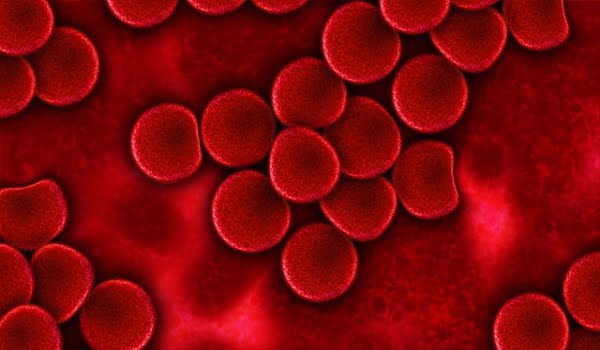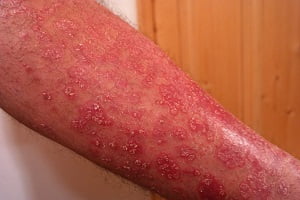What Are The Various Types of Leukemia (Blood Cells Cancer)?
- Updated on: Jul 9, 2024
- 7 min Read
- Published on Oct 3, 2019


To understand leukemia types well, let us first understand bone marrow, types of blood cells and lymphoid tissues.
Bone marrow, blood cells, and lymphoid tissues
Bone marrow is the soft, spongy and gelatinous part found in the inner hollow spaces of some bones such as the skull, shoulder blades, ribs, pelvic (hip) bones, and backbones. The bone marrow consists of undifferentiated blood stem cells, more mature blood-forming cells, fat cells, and supporting tissues that help cells grow known as stroma.
Blood stem cells develop into either lymphoid stem cells or myeloid stem cells which ultimately forms new blood cells in the bone marrow. Lymphoid stem cells are precursors to the production of lymphocytes which is a type of white blood cell.
White blood cells are helpful in destroying abnormal cells as well as in fighting infections. B cells, T cells and natural killer (NK) cells are the 3 types of lymphocytes. The other type of blood stem cells develop into myeloid stem cells which forms red blood cells, granulocytes, monocytes or platelets. Red blood cells carry oxygen which is responsible for transportation of oxygen to all tissues of the body.
More: What is Leukemia?
Granulocytes and monocytes destroy bacteria and help fight infection and are types of white blood cells. Platelets are responsible for clot formation in damaged blood vessels to stop bleeding.
Any of these blood-forming myeloid or lymphoid cells can turn into a leukemia cell. After turning into a leukaemia cell, these cells can’t mature in a normal way and start reproducing very quickly. But they don’t die at the right rate so as to give space to the new cells. This quick reproduction causes them to build up in the bone marrow which overcrowds other blood cells and affect their function too. With time, these leukemic cells spill into the bloodstream and spread to other organs, where they can stop other cells in the body from doing their jobs.
What are the various types of leukemia?
There are various types of leukemia. They are classified based on the type of blood stem cell they develop from and how quickly the leukemia develops and grows. Leukemias developing from abnormal lymphoid stem cells are known as lymphocytic leukemias. These are also known as lymphoblastic leukemias while myelogenous leukemias develop from abnormal myeloid stem cells.
More: Graphics, Images and Infographics for Leukemia
More: Childhood Leukemia
Acute leukemia versus chronic leukemia
Leukemia can also be grouped into acute and chronic leukemia based on the time they take to develop and grow.
Leukemia cells in case of acute leukemia are immature blood cells which are also known as blasts. Since the blast cells divide quickly, these leukemias are fast growing but the leukemia cells don’t divide more often than normal blast cells do. However, they don’t stop dividing unlike normal blast cells that stop division after a time. Most patients with acute leukemia without any treatment are able to live only a few months. Many patients with acute leukemia can be cured successfully as some types of acute leukemia respond very well to the treatment. However, there are some types of acute leukemia which have a less favourable outlook.
Leukemia cells in chronic leukemia type are more mature but they are not completely normal. They generally don’t look like normal white blood cells nor do they fight infection. They survive longer, build up, and crowd out the normal cells. Patients with chronic leukemias can live for many years as the chronic leukemia tends to progress over a longer period of time. Generally, chronic leukemias do not respond well to treatment and are harder to cure than acute leukemias.
Based on whether leukemias are myeloid or lymphocytic and whether they are acute or chronic, they can be divided into 4 main types:
- Acute myeloid (or myelogenous) leukemia (AML)
- Chronic myeloid (or myelogenous) leukemia (CML)
- Acute lymphocytic (or lymphoblastic) leukemia (ALL)
- Chronic lymphocytic leukemia (CLL)
AML and CLL are the most common leukemias in adults. In addition to these 4 main types of leukemias, there are several subtypes of leukemia too.
Acute myeloid leukemia (AML)
Acute myeloid leukemia (AML) is also known by various other names such as acute myelogenous leukemia, acute myelocytic leukemia, acute granulocytic leukemia, and acute non-lymphocytic leukemia.
Acute myeloid leukemia (AML) starts in abnormal myeloid stem cells. The term “acute” means that leukemia that can grow quickly if not treated timely and properly, and would probably be fatal in a few months time.
AML mainly develops from myeloid stem cells that turn into white blood cells except lymphocytes but some cases of AML develop in other types of blood-forming cells as well. There are various sub-types of AML based on genetic and other prognostic factors.
Usually AML starts in the bone marrow but it is seen in most cases that it quickly moves into the blood and can spread to other parts of the body including the lymph nodes, liver, spleen, central nervous system (brain and spinal cord), and testicles.
AML is slightly more common among men than among women but both genders have same life time risk percentage of developing AML which is around 0.5%-1%. AML generally develops in older people and is uncommon before the age of 45. It is one of the most common types of leukemia in adults but is less common in children.
According to estimates by The American Cancer Society, there will be about 19,520 new cases of AML in 2018, mostly in adults, and there will be about 10,670 deaths due to AML.
Chronic myeloid leukemia (CML)
CML is one of the less common leukemia types in adults and it rarely develops in children. CML starts in certain blood-forming cells of the bone marrow. This type of cancer is caused by a genetic change that takes place in early or immature myeloid cells. These myeloid cells develop into red blood cells, platelets, and most types of white blood cells except lymphocytes. The genetic change in immature myeloid cells result in the formation of an abnormal gene called BCR-ABL, which turns the cell into a CML cell. Once these cells change to leukemia cells, they grow and divide, building up in the bone marrow and spilling over into the blood.
With time, the cells can also settle in other parts of the body, including the spleen. Generally, CML is a type of slow-growing leukemia, but it can also change into a fast-growing acute leukemia that is hard to treat.
Only 10% of all new cases of leukemia accounts for CML. This type of leukemia is generally get diagnosed after 65 years of age.
Acute lymphocytic leukemia (ALL)
Acute lymphocytic leukemia (ALL) starts in abnormal lymphoid stem cells which forms lymphocytes, a type of white blood cells. It is called acute because it can grow very quickly. It is also known by another name of acute lymphoblastic leukemia.
ALL extends itself to the blood fairly quickly and can then spread to other parts of the body, including the lymph nodes, liver, spleen, central nervous system and testicles in males.
There are some cancers other than leukemias that may start in lymphocytes and are known as lymphomas such as non Hodgkin lymphoma and Hodgkin disease. The difference between these cancers and leukemia such as ALL is that leukemias mainly affects the bone marrow and the blood, and may spread to other places, while the lymphomas mainly affect the lymph nodes. However, sometimes, lymphomas may involve the bone marrow and other organs too.
In case cancerous lymphocytes are found in both the lymph nodes and the bone marrow after the diagnosis, it is hard to tell if the cancer is leukemia or lymphoma. The disease is usually considered leukemia if more than 25% of the bone marrow is replaced by cancerous lymphocytes. The size of lymph nodes is detrimental of lymphoma. The bigger is the size; it is more likely that it will be considered as lymphoma.
Children younger than 5 years of age are at the greatest risk of developing this type of cancer. The risk then declines until the mid-20s and after the age of 50, it again starts increasing slowly. The risk of getting ALL is slightly higher in males than in females as well as in whites than African Americans.
Most of the ALL cases occur in children but more deaths happen in adults due to ALL. This is because children’s body is able to tolerate the aggressive treatment better than that of an adult.
Chronic lymphocytic leukemia (CLL)
Like acute lymphocytic leukemia, CLL also starts in the stem blood cells of the bone marrow which develops into lymphocyte. It is also known as chronic lymphoid leukemia.
It is called chronic because in CLL, the leukemia cells build up slowly over months or years. It starts in the bone marrow but can invade the blood as well and spread to other parts of the body such as lymph nodes, spleen and liver. In most of CLL cases, the abnormal lymphoid stem cells develop into cancerous (malignant) B cells, or B lymphocytes.
CLL constitute about one quarter of the new cases of leukemia and it is one of the most common types of leukemia in adults. Males have slightly higher risk of developing this cancer than females. It mainly affects older adults and is very rare in children.
Other than these 4 main types of leukemia, there are some more types of leukemia which are explained below.
Juvenile myelomonocytic leukemia (JMML)
JMML is a rare type of leukemia mainly affecting young children under the age of 4. It is neither chronic nor acute. It starts from myeloid cells, but it neither grows as fast as AML nor as slow as CML.
Some of the symptoms manifested by JMML are as follows:
- Fever
- Cough
- Pale skin
- Easy bruising or bleeding
- Trouble breathing (from too many white blood cells in the lungs)
- Enlarged spleen and lymph nodes
Hairy cell leukemia
Hairy cell leukemia is a rare type of leukemia. It is a slow-growing cancer of the blood in which your bone marrow makes too many B cells. B lymphocytes are a type of white blood cell that fight infections. The abnormal B lymphocytes produced in this leukemia appear “hairy” under a microscopic view. The excess production of leukemia cells checks the production of healthy white blood cells, red blood cells and platelets.
Men are more affected by hairy cell leukemia than women, and it occurs most commonly in middle-aged or older adults.
It is considered as a chronic disease because generally it doesn’t disappear completely. A treatment can lead to a remission for years but it can come back again.
People do not experience any signs or symptoms of hairy cell leukemia for a long time, but sometimes a blood test for another disease or condition may reveal hairy cell leukemia. In some cases, symptoms experienced by people with hairy cell leukemia may be common and overlap with other medical conditions and diseases, such as:
- Fatigue
- Easy bruising
- Recurring infections
- A feeling of fullness in your abdomen that may make it uncomfortable to eat more than a little at a time
- Weakness
- Weight loss
Chronic Myelomonocytic Leukemia (CMML):
CMML is a type of leukaemia, characterised by typically high numbers of white blood cells, called ‘monocytes’, in the bone marrow and the blood. Since the number of monocytes is much higher, it increases the total number of white blood count as well.
People with this type of leukemia usually have enlarged spleen. About 15% to 30% of patients with CMML go on to develop acute myeloid leukemia in later stages of the disease.
CMML has features common to two other types of blood cancer – myelodysplastic syndrome and myeloproliferative disorder. This is the reason experts group it in under myelodysplastic/myeloproliferative diseases. CMML is one of the most common diseases in this group.











